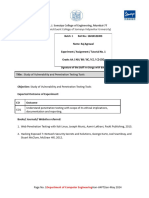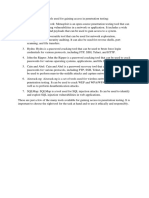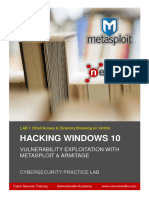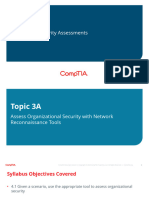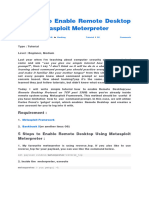0% found this document useful (0 votes)
22 views9 pagesPenetration Testing Tool Guide
The document is a guide on penetration testing tools essential for cybersecurity professionals, detailing the top 10 tools and their functionalities. It explains the penetration testing process, including planning, reconnaissance, vulnerability assessment, exploitation, and remediation. The guide emphasizes the importance of ethical hacking in identifying and mitigating security vulnerabilities to protect organizations from potential threats.
Uploaded by
nageshanithaCopyright
© © All Rights Reserved
We take content rights seriously. If you suspect this is your content, claim it here.
Available Formats
Download as PDF, TXT or read online on Scribd
0% found this document useful (0 votes)
22 views9 pagesPenetration Testing Tool Guide
The document is a guide on penetration testing tools essential for cybersecurity professionals, detailing the top 10 tools and their functionalities. It explains the penetration testing process, including planning, reconnaissance, vulnerability assessment, exploitation, and remediation. The guide emphasizes the importance of ethical hacking in identifying and mitigating security vulnerabilities to protect organizations from potential threats.
Uploaded by
nageshanithaCopyright
© © All Rights Reserved
We take content rights seriously. If you suspect this is your content, claim it here.
Available Formats
Download as PDF, TXT or read online on Scribd
/ 9







